Kelham - Part 01 - Kelham Hall
w/e 31 July 2016
All of this week's pictures were
taken with a Kodak DX6490
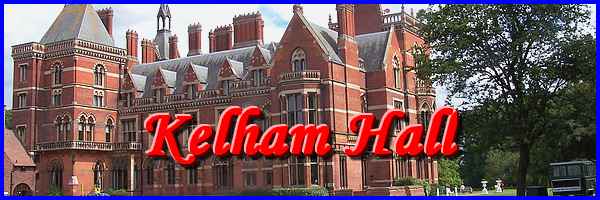
This was not so much a "Day Out" but rather
an afternoon outing to meet up with some friends from church
for a pre-arranged guided tour around Kelham Hall. It could quite
easily be extended though into a longer excursion as the Hall
stands in a Country Park and is within easy reach of Newark-on-Trent
with its Castle and historic connections to the English Civil
War. As it was we set out early and took the scenic route from
Ilkeston via Linby, Papplewick, Calverton and Southwell rather
than the more direct alternative of Nottingham and then along
the A46 into Newark. This gave us plenty of time to make a couple
of brief stops along the way.
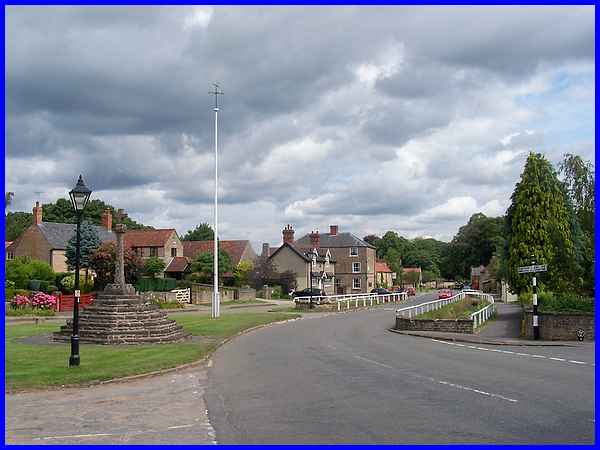
The first pause in our journey was to take this photo of the
picturesque centre of Linby Village. Although now a Conservation
Area and looking clean and pristine it is not so very long ago
that the village was overshadowed by Linby Colliery. Streams
flank each side of the main road and are known as Linby Docks.
(I think it calls for a return visit some time to take a closer
look at the village).
|

We moved on from Linby and our next stop was in Southwell shortly
after passing the attractive and flower bedecked Saracens Head
as we headed towards Newark.
|
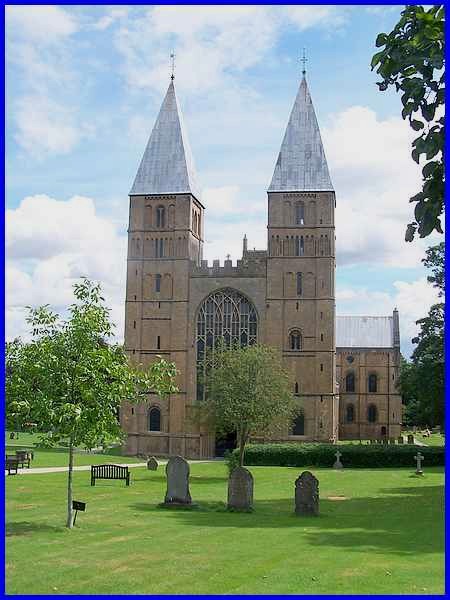
Southwell is famous for its Racecourse, its Workhouse under the
jurisdiction of the National Trust and for being the home of
the original Bramley apple tree among other historic events involving
the likes of King Charles I and Lord Byron. No visit to Southwell
of course would be complete with a look at the Minster.
|
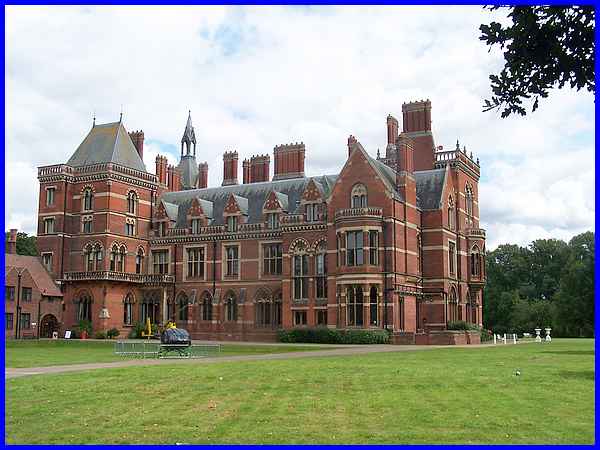
It is approximately an hour's drive from Ilkeston to Kelham Hall
whether by the scenic route or the main roads and we arrived
well before the appointed time for the tour which gave us the
opportunity to explore some of the grounds surrounding the buildings.
Part of the Hall is occupied by the Newark and Sherwood District
Council who purchased the Hall in 1974 but it was sold in 2014
to Kelham Hall Ltd.
|
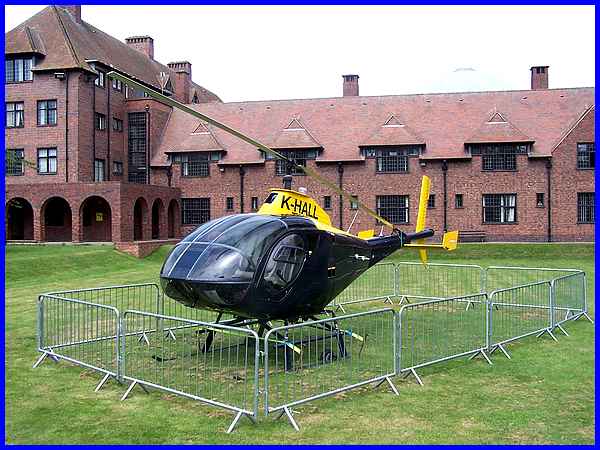
A large green lawn outside the Hall that we later learned had
once been tennis courts now has a helicopter standing in the
middle of it. Kelham Hall Ltd plan to turn their acquisition
into a tourist attraction, spa and luxury hotel and as we also
found out later, use the decommissioned helicopter as a novelty
attraction for children (and probably adults too) who hopefully
will be able to sit in the cockpit and hear the noise of the
engine.
|
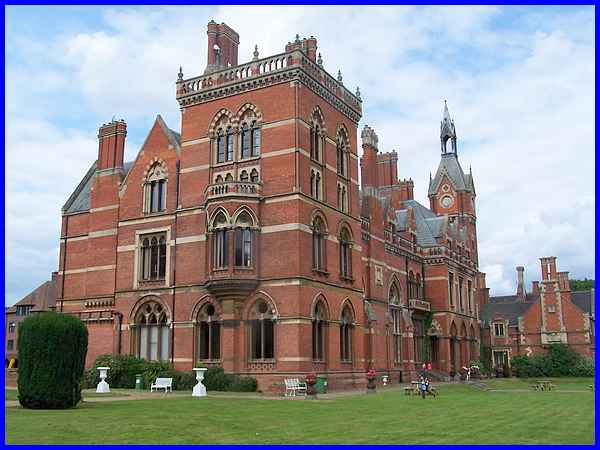
It is thought that the original Hall on this site was a Tudor
style manor house in which King Charles I was held after his
surrender during the Civil War in 1646 and before he was taken
to London for execution. Some time later in 1728, a new Hall
was commissioned by the Duchess of Rutland but this burnt down
in 1837. Its replacement - the Hall as we see it today - for
the Manners Sutton family was designed by the architect George
Gilbert Scott in 1861. That's the same Scott who was knighted
in 1872 and is famous for designing St Pancras Station and Hotel
in London plus many other notable buildings across the country.
|
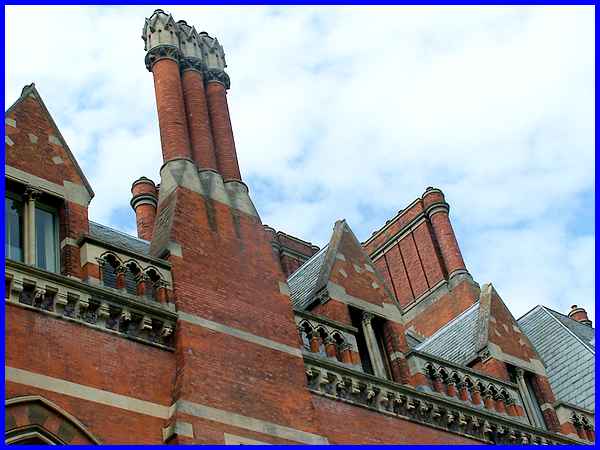
Sir George Gilbert Scott (1811-1878) is noted for being instrumental
in Gothic Revival architecture, the term used to denote nineteenth
century use of designs common in mediaeval Europe. He also appears
to have a penchant for tall chimneys. Kelham Hall, built for
a family of only four, two parents with two children, had thirty
five bedrooms and its cost drove the Manners Sutton family into
bankruptcy. In 1900 it was sold to the Home Grown Sugar Beet
Company, who used adjacent farm land. British Sugar still has
a factory in Newark.
|
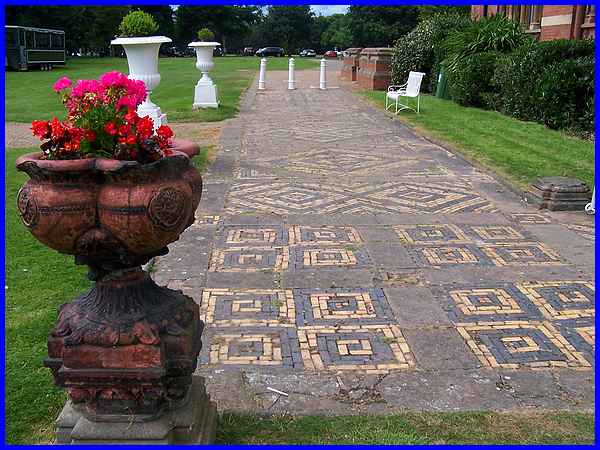
By 1903 however, ownership of the Hall had passed to the Society
of the Sacred Mission. It was used as a training centre and the
Gothic style and the churchlike interior which we would see later
would surely have made the monks feel at home. Likewise the mosaic
paving outside the Hall adds to the religious atmosphere that
pervades. The white flower urns on the left mark the end of the
King's Path.
|
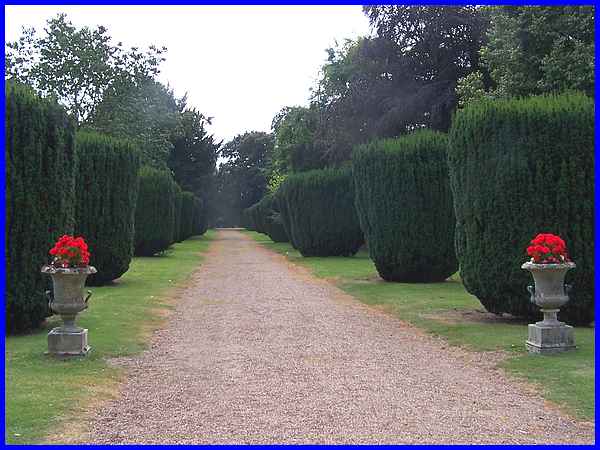
Graduating students from the training centre were sent all over
the world as missionaries direct from Kelham Hall and although
their families were present at the leaving ceremony, there would
be no sad goodbyes as they left immediately with no contact with
their nearest and dearest. Life for the students at the college
involved hard work and learning for long hours to prepare them
for their chosen vocation in what are best described as spartan
conditions and they would have had little time to wander the
King's Path where Charles I was allowed to pace back and forth
in 1646.
|

It is most unlikely too that the students were able to spend
long hours in the solitude of the Gazebo that stands a little
way from the Hall. Pre-dating the present Hall by about fifteen
years or so the Gazebo is thought to have been designed about
1845 by Anthony Salvin for the Manners-Suttons. Now a Listed
Grade II* structure the columns were probably added later by
Scott.
As the scheduled time for our guided tour approached we made
our way to the Reception area to discover more of the architectural
delights inside the Hall.
Forward to Part 02
|











